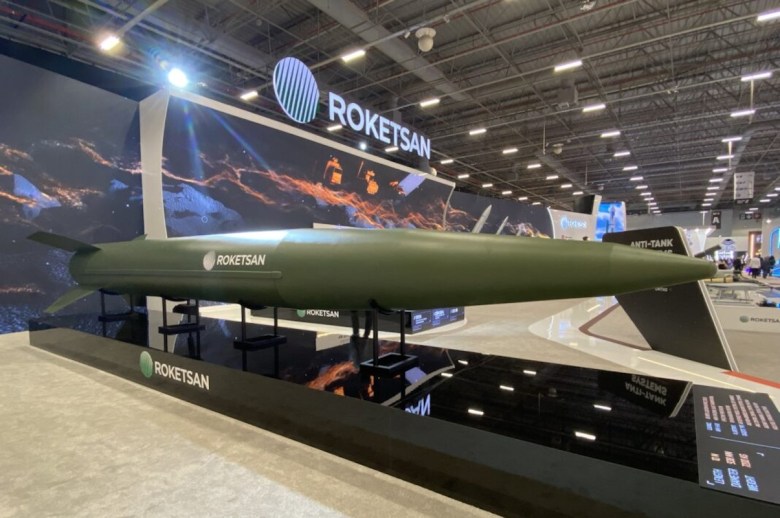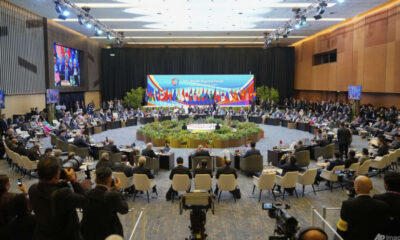Politics
Turkey Unveils Hypersonic Missile, Heightening Regional Tensions

Turkey has recently escalated the arms race in the Middle East by unveiling its first hypersonic missile, the Tayfun Block-4, at the International Defense Industry Fair (IDEF) in Istanbul. Developed by the state-owned defense company Roketsan, this missile represents a significant advancement in Turkey’s quest for indigenous military capabilities amid ongoing regional tensions and a broader defense modernization agenda.
The Tayfun Block-4 operates at hypersonic speeds, exceeding 280 kilometers in range and designed to carry a pre-shaped fragmentation warhead. It employs an advanced navigation system to strike high-value targets, including integrated air defenses and command and control facilities. Roketsan confirmed that the missile weighs over seven tons and is intended exclusively for Turkey’s military use, not for export.
This development forms part of Turkey’s comprehensive military expansion efforts, which also include a fifth-generation fighter jet and a domestically built aircraft carrier. Following Turkey’s suspension from the US F-35 program in 2019 due to its acquisition of the Russian S-400 missile defense system, the country has intensified its pursuit of strategic autonomy. The Tayfun missile may enhance Turkey’s ability to project power and deter regional adversaries, yet it also risks exacerbating instability and straining relations within NATO.
Experts like Ozgur Eksi and Kaan Azman have highlighted that hypersonic missiles could threaten Israel’s layered air defense systems, particularly in light of Iran’s recent military actions. They argue that Turkey’s development of its own layered air defense systems, dubbed the “Steel Dome,” aims to counter such threats while enhancing its deterrent capabilities.
Turkey is also working to extend the Tayfun‘s range to 1,000 kilometers, transitioning from tactical systems to theater-range capabilities. This evolution is part of a broader regional strategy where countries increasingly adopt long-range missiles as cost-effective alternatives to traditional air power, allowing for precise strikes without risking pilots.
Notably, John Sheldon from the International Institute for Strategic Studies has pointed out that both state and non-state actors are leveraging these missile systems to influence adversary behavior, thereby enhancing operational flexibility in various conflicts. A significant number of countries in the region, including Bahrain, Iran, and Saudi Arabia, possess long-range missiles, indicating a shift toward domestic arms production and strategic independence.
Turkey’s military interventions in Syria and Libya demonstrate its assertive Mediterranean strategy, aimed at reshaping regional dynamics through military and diplomatic means. Analysts Emadeddin Badi and Abdullah al-Jabassini caution that while Turkey’s dual-theater engagements have yielded short-term benefits, they also expose the country to potential overextension and retaliation from rivals such as Israel, which views Turkey’s expanding influence in Syria as a direct threat.
The introduction of hypersonic weapons not only reshapes Turkey’s military landscape but also complicates its relationships within NATO, particularly concerning longstanding tensions with Greece. Following a series of confrontations, including President Recep Tayyip Erdogan‘s threats to strike Athens with ballistic missiles, the potential for conflict remains high.
While the Tayfun serves as a symbol of Turkey’s push for strategic autonomy in the face of arms embargoes and NATO skepticism, analysts like Marianna Serveta argue that its tactical nature reflects local defense priorities more than a redefinition of alliance-level deterrence.
As Turkey moves closer to operational deployment of the Tayfun Block-4, the challenge lies in calibrating its deterrent value without further escalating tensions in a volatile region. The missile’s development exemplifies the complex interplay of military capabilities, regional ambitions, and the ongoing quest for power dynamics in the Middle East.
-

 Business5 months ago
Business5 months agoKenvue Dismisses CEO Thibaut Mongon as Strategic Review Advances
-

 Lifestyle4 months ago
Lifestyle4 months agoHumanism Camp Engages 250 Youths in Summer Fest 2025
-

 Sports4 months ago
Sports4 months agoDe Minaur Triumphs at Washington Open After Thrilling Comeback
-

 Sports5 months ago
Sports5 months agoTupou and Daugunu Join First Nations Squad for Lions Clash
-

 Top Stories5 months ago
Top Stories5 months agoColombian Senator Miguel Uribe Shows Signs of Recovery After Attack
-

 World5 months ago
World5 months agoASEAN Gears Up for Historic Joint Meeting of Foreign and Economic Ministers
-

 Health4 months ago
Health4 months agoNew Study Challenges Assumptions About Aging and Inflammation
-

 Business5 months ago
Business5 months agoOil Prices Surge Following New EU Sanctions on Russia
-

 Entertainment4 months ago
Entertainment4 months agoDetaşe-Sabah Violin Ensemble Captivates at Gabala Music Festival
-

 Entertainment4 months ago
Entertainment4 months agoBaku Metro Extends Hours for Justin Timberlake Concert
-

 Top Stories5 months ago
Top Stories5 months agoRethinking Singapore’s F&B Regulations Amid Business Closures
-

 Business5 months ago
Business5 months agoU.S. House Approves Stablecoin Bill, Sends to Trump for Signature









